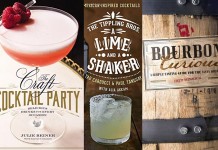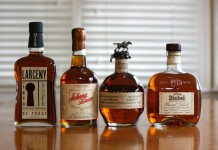
There’s a popular misconception that Armagnac is very similar to Cognac. On the surface, it would be easy to make this connection: both spirits are distilled from grapes, made in France, with defined growing regions (Bas-Armagnac, Armagnac Tenareze and Haut Armagnac), an AOC, and a defined notation of age (VS, VSOP, Napoleon / XO, Hors d’Age). Once you really begin to dig into Armagnac, the differences really begin to outshine any similarities. Cognac is a spirit category with rules and regularities designed to create similarities between different cognacs, while Armagnac is defined more by just how different each Armagnac is.

To understand Armagnac, you really have to understand the region it’s made in. Armagnac comes from the southwest of France in a region referred to as Gascony, a stone’s throw from the Pyrenees mountains and a reasonable drive to the Basque region between France and Spain. This region is known worldwide more for its gastronomical delights including its world famous foie gras, light dry wines, and Gascogne pigs than for Armagnac.

Unlike Cognac where you’ll find tasting rooms and sensory experiences that could be right out of an amusement park ride, in Armagnac tasting rooms are located in old castles, chateaus, vineyards, and even farms. Armagnac isn’t a very brand-driven spirit, and many of the distilleries that produce Armagnac don’t even sell their spirits in the US.

There’s a saying in Gascony, “There’s an Armagnac out there for everyone, you just need to find it.” While Armagnac is divided into three regions, there’s a tremendous amount of variety of character within each area. The palate for Armagnac is also larger in terms of grape selection than Cognac, with ten varieties which are permitted to be used: Ugni Blanc, Baco 22A, Colombard, Folle Blanche, Clairette de Gascogne, Blanquette Grise, Mauzac Blanc, Mauzac Rose, White Jurançon, and Meslier Saint-François. Most Armagnac comes from Ugni Blanc, Folle Blanche, Colombard, and Baco, but you can still find unique uses of the other grapes in small amounts scattered throughout the region.

While most Armagnac is made on Alambic column stills, Armagnac can also be made on swans neck Charente pot stills, the style used to make Cognac. Even though the majority of Armagnac uses Alambic stills, the variety of still sizes and forms can vary radically, from permanent gas-powered column stills to mobile wood-fired stills.
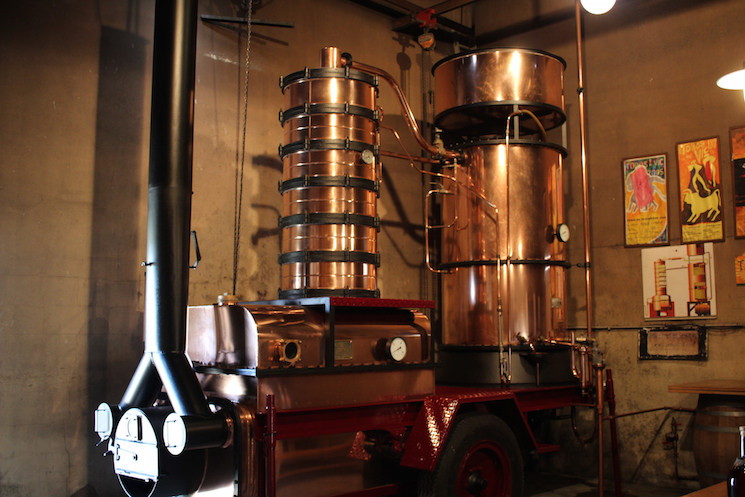
A significant amount of Armagnac is made on these wood fired, mobile stills, which are wheeled up to a winery after harvest and winemaking. These stills work around the clock to produce a year’s worth of spirit, which is often accompanied by great harvest feasts and parties (with bread warmed right on the still).
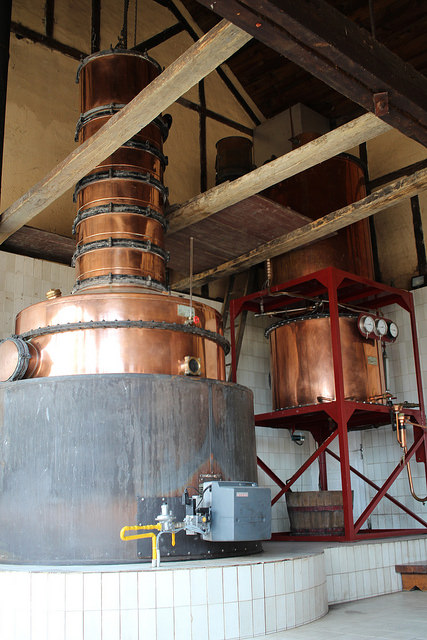
Because it’s a column still, most Armagnac is made in a single pass. The size of the still, the number of plates, and the heat source can all have an impact on the character of the final spirit. Unlike many other spirits, there are no “cuts” made in an Armagnac distillation, which can mean the inclusion of more volatile elements in the mix. This helps give Armagnac a more bold character, and a structure which makes it excellent for use in cocktails.

One of the ways Armagnac deals with more volatile elements is in the maturation process. Unlike many spirits that only see the inside of a single barrel, the aging process for Armagnac often involves the use of several different barrels and tanks. These casks are called pieces and range from brand new 400 liter French Oak casks to large, very old, aging vats where blends are married.
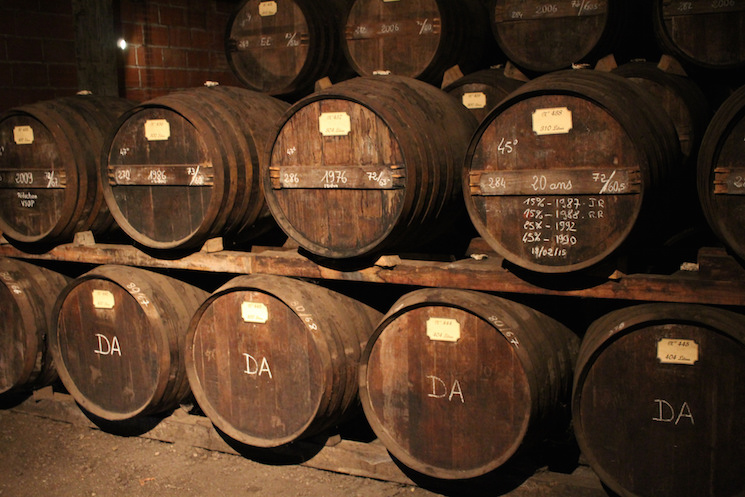
Although all Armagnac is aged in French Oak, the kind of oak can make a notable difference in the final product. Many contemporary producers of Armagnac use oak casks made from wood harvested from the Limousin forest. This oak is subdivided between wide and narrow grain, each of which impart unique character to the final spirit. In addition, some producers use casks from black oak harvested from the Gascony region. These are becoming less common as the supply of oak has dwindled in the area. Gascon oak tends to be more tannic and imparts much more color, and tends to have a more intense and dark fruity character (like prunes and plums).

Another way Armagnac deals with these volatiles is through aeration. Many Armagnac producers empty out their barrels every year into tanks, and then pump the spirit either back into the original cask or into a different cask (often an older one that imparts fewer tannins). This aeration process, which is referred to as “working your Armagnac” is part of what makes Armagnac unique, as most other spirt categories don’t do this process.

While Cognac works to mitigate the seasonality of the grapes it uses, Armagnac tends to embrace it. With mobile stills and annual distillations, there are many more vintage offerings in the Armagnac category, some which are staggeringly old.

Armagnac can be extremely difficult to explain without tasting, so here are some of the tasting notes from the standouts from our visit to the Armagnac region:
Janneau Grand Armagnac – Janneau is located in Tenareze and was at one time owned by Martel and then Seagrams (they are now owned by Giovinetti Partnership). They are one of the few distilleries that uses both the alambic Armagnac still and the Charente. Their Armagnacs labeled “Single Distilled” come from the Alambic, and “Double Distilled” from the Charente. Their 30 year old single distilled Armagnac is made from Baco grapes, and it’s stunning with a nose that marries floral and spicy. On the palate it’s prune, nutmeg, digested oak, leather, and vanilla. It has a bright and acidic quality to it, some youth in the age. The core is leather, earth, chocolate, and oak. In the double distilled range, their 25 year old armagnac is equally stunning.

Chateau de Pellehaut Armagnac – located in the Tenareze region, Pellehaut was one of the most surprising standouts. Pretty much everything we tasted there we loved, including their Blanche Armagnac (which is an unaged spirit). The vineyard is known as much for their wine and cattle as their Armagnac and uses a mobile still which parks at the distillery for a week every year. Pellehaut’s 10 year offering is one of the best in its class with a beautiful floral and spice nose, and a palate that presents oak, ginger, vanilla, rancio, violets, almond, and Christmas cake. It’s flavorful, feminine, and simply lovely. Another stunner is their La Reserve de Gaston, which is a mix of ugni blanc and folle blanche grapes. This Armagnac is extraordinarily balanced, with deep citrus and white flowers combined with leather, ginger, and oak. It has a long and stunning finish.

Tariquet Armagnac – located in Bas-Armagnac, Tariquet is well known for their wines which tend to be dry, fruity, and clean (check out their Tariquet Classic wine as well as their Chardonnay for examples of stellar Gascon wine). This style of winemaking lends itself very well to Armagnac which needs dry, fruity wines to build from. Although the winemaking part of Tariquet uses modern tools to facilitate traditional methods, their Armagnac is all made on a very portable, woodfired alambic still. Tariquet has two main lines of Armagnac, the traditional VSOP, XO, and Le Legendary along with a 8, 12, and 15 year line. All of Tariquet Armagnacs are defined by a similar style marrying the light floral elements for folle blanche with the deep spice of French oak.
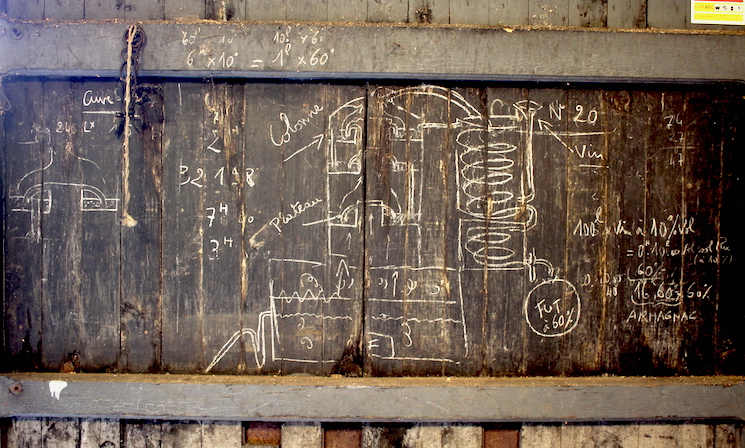
Armagnac Delord – located in Bas-Armagnac, this family distillery runs on a hand built still (with the distilling directions written on chalk on the barn door). As rustic as is it, Delord has one of the better tasting experiences (including their Armagnac-soaked prunes). The absolute standout is Delord’s 25 Ans d’Age which has lovely fruit on the entry intermingled with strong pice. Extraordinary deep integration of sweet fruit and spice with insanely good complexity and a long finish, this is nothing short of a wow Armagnac.

Chateau de Laubade – it’s hard not to feel like you’ve woken up in a storybook at Chateau de Laubade. This majestic winery and distillery captures all the magic of what Armagnac can be (and it’s hard to think that it’s the same style spirit produced here as in the back of the barn at Delord). Chateau de Laubade is everything you’ve imagined a French countryside chateu to be and more, and their Armagnac reflects that. Laubade’s VSOP, a 6 year old Armagnac, is as good a starting point into this category as you can get. Young ripe ugni blanc fruit on the nose leads to vanilla, creme brule, and light spice with ginger and clove wrapped with a long finish. Also of note is Laubade’s No 5, a 20 year old Armagnac made from Bacco grapes with solid digested oak, varnish, white flours, dark chocolate, and toast. It’s soft and light on the palate, but manages to deliver exceptional flavor, a tamed beast.

Armagnac Castarede – like Chateau de Laubade, Castarede somehow feels like it’s out of a storybook, perhaps The Three Musketeers (which was set in Gascony). Castarede specializes in acquiring and bottling vintage Armagnac with bottles for sale as old as 1893. Buying a bottle from the year of your birth is quite popular at Castarede, and so we tried the 1970, which had big caramel and ginger, deeply integrated with a stunning finish. The 1964 Castarede was mind blowing with deeply integrated sweet and spicy flavors that felt like soulmates. The 1939 has deep coffee, oak, digested oak, and ginger. Because Castarede curates, they’ve managed to bottle some really beautiful Armagnacs.

From light and floral to deeply spicy, heavy dark fruit to leather and chocolate, the range of flavors and expressions in the Armagnac region span across a wide spectrum. Beyond flavors, the character of these Armagnacs vary dramatically from distillery to distillery (even in the same “region”). The downside of Armagnac is that you really do have to taste a ton of Armagnacs to find the one that’s the best fit for you. The upside is that if you go to Gascony, you’re following your Armagnac journey into a truly magical place.







